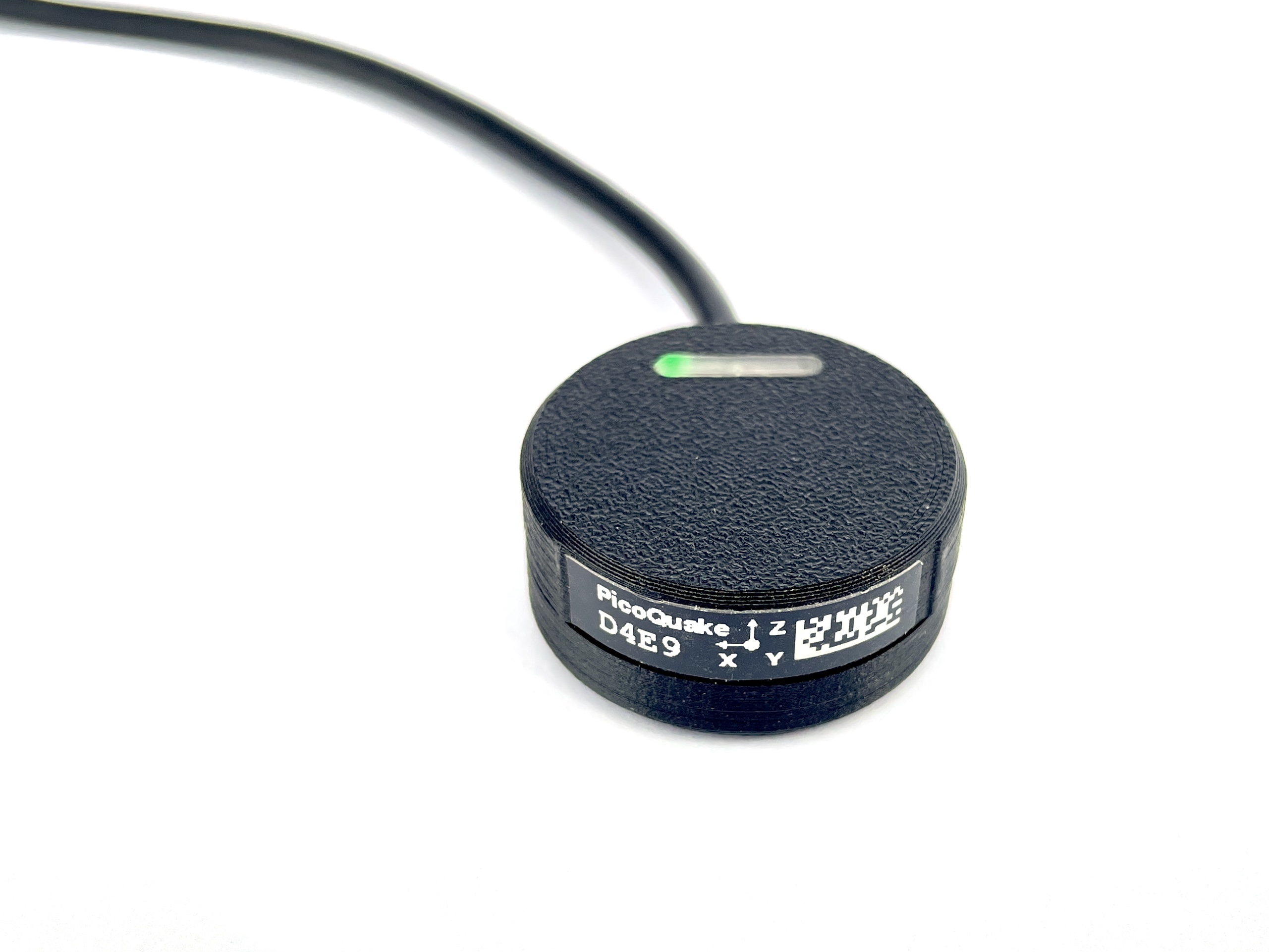Overview:
PicoQuake is a MEMS accelerometer vibration sensor designed to profile a wide range of vibrations. It can capture everything from very low-frequency movements (tall buildings, bridges), to high-frequency vibrations in the kilohertz range (motors, industrial machinery).
Key features:
- Wide frequency range: Suitable for both low and high-frequency vibration monitoring.
- Accessible: A cost-effective alternative to traditional industrial vibration sensors, which often require proprietary hardware and software.
- Standalone device: Connects directly to your computer (Linux, Mac, Windows) via USB.
- Open-source integration: Interfaced through an open-source Python driver, providing a command line interface (CLI) and an API for easy integration and customization.
- Accelerometer ranges: +-2 g, +-4 g, +-8 g, +-16 g
- Gyro range: up to +-2000 dps
- Sample rate: 12.5 Hz to 4000 Hz
- Configurable low pass (second order) filter: 42 Hz to 3979 Hz
- IMU sensor: ICM-42688-P
- Connectivity: USB 2.0 Full Speed 12 Mbps CDC via USB Type-C
- Power requirement: 5 V, 50 mA
- Cable length: 1.8 m
- Dimensions: ⌀30 mm x 13 mm
PicoQuake can be used to profile vibrations of very low magnitude, due to the low-noise accelerometer used. We evaluated the noise performance of a stationary PicoQuake at room temperature for two configurations:
- Low noise configuration: 500 Hz sample rate, 42 Hz filter, +-2 g range
- X axis noise: 0.43 mg RMS
- Y axis noise: 0.46 mg RMS
- Z axis noise: 1.17 mg RMS
- Full performance configuration: 4 kHz sample rate, 2 kHz filter, +-16 g range
- X axis noise: 1.88 mg RMS
- Y axis noise: 2.21 mg RMS
- Z axis noise: 2.57 mg RMS
You can buy PicoQuake on Tindie.

